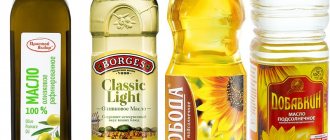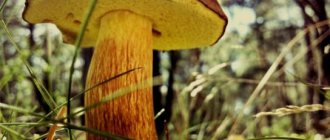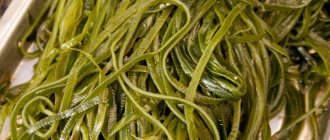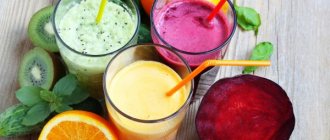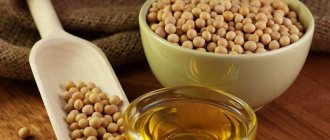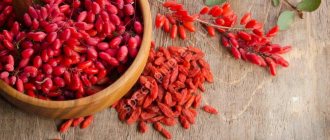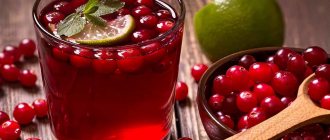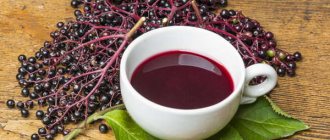- 6810
- lingonberry viburnum cranberry lemongrass sea buckthorn rose hips Berries
Autumn berries are natural antidepressants. And they will be a great help to those who for some reason decided that it is too late to expect pleasant surprises.
Autumn berries are stored for a long time and are easily turned into preserves, jams, fruit drinks and cocktails. That is, that supply of energy that will help you overcome a bad mood in the autumn season and even... lose weight.
April
The Crimean spring is an unpredictable thing. It happens that in the second half of the month you can already sunbathe, but it happens the other way around - suddenly there are frosts and the flowering trees are covered with snow. But we will still consider the average weather and will not go to extremes.
Strawberry
The strawberry season in Crimea opens in the spring.
Photo: pixabay.com In Crimea, this delicious berry is usually planted in early March under film in order to get the first harvest by April. The very first berries are rarely sweet, since they have not yet had time to be saturated with the hot sun, but nevertheless they are already fragrant and very beautiful.
By the end of April, all markets in Crimea are usually bursting with strawberries. And here you shouldn’t chase the appearance of the berries. As a rule, the largest and most blemish-free ones turn out to be not the most delicious. But the unsightly, sometimes even shapeless ones are the sweetest and most fragrant.
Price: from 200 rub. for 1 kg.
May
In the last month of spring, the Crimean markets are simply overwhelmed with fruit and berry abundance. Strawberries, already full of juice and sweetness, flood the markets, but new harvests are also ripening.
Cherries
This berry is akin to seeds: once you start eating it, it’s difficult to stop.
Photo: pixabay.com Queen of Crimean berries. The first cherry does not yet have strength and sweetness; it is pink and rather small. But for those who can’t wait to get a taste of summer, I can buy some. But by the end of the month, many varieties are already offered to buyers. Here it is worth noting the best of them: “Valery Chkalov”, “Bull’s Eye” and “Ox Heart”. The first is sweet and black, the second is very large, black, and the third combines all these characteristics and really resembles a heart in shape.
As with strawberries, there is no need to chase beauty here. Often the sweetest is the small black berry, the price of which is much lower than for “exhibition” varietal cherries. You should take at least a kilogram of it, because this berry is akin to seeds: once you start eating it, it’s difficult to stop.
Price: from 120 rub. for 1 kg.
The most useful autumn berries
Autumn berries are simply a huge amount of vitamins that will help you not only improve your health, but also strengthen your immune system. In addition, you can not only eat them, but also make various dishes from them, or even tinctures, which will be very tasty. Therefore, we decided to tell you what the healthiest autumn berries are, and why they are.
Chokeberry or chokeberry
It is these autumn berries that will help strengthen your immune system very quickly and greatly. Chokeberry contains a lot of vitamins C and P, which, by the way, have a very good effect on the endocrine system and resist hypovitaminosis, anemia, diseases of the gallbladder and thyroid gland. You can also make small preparations for the winter by simply freezing the berries.
Kalina
And these autumn berries are a real storehouse of vitamin C. If in the summer we got it from citrus fruits, now, viburnum can perfectly replace them. Also, viburnum will help significantly strengthen the immune system and save you from various infections. You can simply store viburnum in the refrigerator, filling it with cold water.
Popular articles now
A Ukrainian was brutally dealt with in Poland: “He returned from work in a coffin”
In Kyiv, a powerful gas explosion claimed the life of a man - there was no chance
“So many goodies,” Dasha Astafieva flashed her sexy curves while lying on the table
The legendary actress and singer Anni Kordi has passed away - she will no longer sing on stage
show more
Rose hip
And it is this that can be considered almost the most useful autumn berry. Rosehip contains the most vitamin C, confidently outperforming viburnum and all citrus fruits in this indicator. In addition, it is thanks to this vitamin that rose hips greatly strengthen the immune system. It is worth noting that from this berry you can make a lot of different dishes, or compotes that can be stored even until winter.
Cranberry
The list of vitamins in cranberries is simply incredible: C, PP, B1, B2. In addition, cranberries are also very nutritious, so dishes made from them are perfect for breakfast or even a light dinner. In addition, you can make almost anything from them: pies, pies, and even compotes.
Hawthorn
No, not that kind of hawthorn, but a useful one. This berry contains a lot of pectin, which helps the body cope with all bad cholesterol. Also, hawthorn will help remove other harmful substances from the body. You can make quite a lot of delicious things from this berry, but the most popular is jam or jelly.
June
Summer in Crimea lasts so long that it is difficult to say in which month which berry appears. Different varieties ripen at different times, so the same cherries can be found on sale in April and even at the end of July. And strawberries produce 2-3 harvests per year. Therefore, in June, cherries still dominate among the Crimean berries on the markets, but there are already others.
Mulberry or mulberry
In Crimea, this tree grows everywhere: it is planted in personal plots, on the streets and in parks. Mulberries, a close relative of figs, grow very quickly and are incredibly unpretentious. At the beginning of summer, delicious white and black berries appear on its branches, vaguely reminiscent of blackberries. The tree got its name because its leaves are adored by the silkworm, which is why mulberry branches are used in grenage factories as food for caterpillars.
Of course, you can buy mulberries at the market (there they are sold in cups), but there is also a high probability of encountering a tree strewn with berries right on the street.
Price: 100 rub. for 1 glass.
Strawberries
The most interesting place to look for strawberries is on the edges of forests.
Photo: globallookpress.com One of the few berries that grows in the Crimean forests is strawberries. She loves the edges of the beech and hornbeam forests of the mountainous part of the peninsula, which she often covers with a continuous carpet. And the higher you go in the mountains, the larger, sweeter and more aromatic the strawberries are. If you climb, say, to the Chatyr-Dag plateau, you can find berries the size of hazelnuts.
Those who are too lazy to go to the forest can buy strawberries at the market.
Price: 100-150 rub. for 1 glass.
Seasonal products for autumn: what to buy right now
Natural, cheap, and most importantly – healthy. We are making a list of products that you should first pay attention to when going to the supermarket or market.
According to multiple studies, seasonal foods provide the greatest health benefits. Fresh vegetables and fruits, literally picked from the bush, are recommended for baby food, the diet of pregnant and lactating women, the elderly and athletes - in general, for everyone who cares about their body. A nice bonus: this storehouse of vitamins and microelements is now quite inexpensive. In short, we recommend that you add the healthiest seasonal autumn products to your shopping list.
Of course, the first thing that comes to our mind is the most autumnal, but at the same time the most “cheerful” vegetable. By the way, the Halloween symbol contains five times more carotene than carrots. This substance is converted in your body into vitamin A, which protects your eyes, helps wounds and burns heal faster, and has an overall antioxidant effect.
Seasonal products of autumn. Pumpkin. Photo: Pixabay
Pumpkin is consumed as a side dish, filling for pies, an essential ingredient in cream soups, and even as drinks. In the midst of autumn, be sure to try a pumpkin latte - with syrup made from orange vegetable puree.
more on the topic
Eat to live: how to replace your favorite but harmful foods
Nutritionists advise eliminating red meat, sweets, fast food and other favorite but unhealthy foods from your diet. But how can you enjoy food in this case? We have some tips on how to painlessly replace harmful foods with healthy ones.
The berries of this plant, which bear fruit in September, are widely used in cooking - they are used to make jelly, fruit juice, compote, and jam; bake pies and prepare mousses. In folk medicine, elderberry has also proven itself to be excellent. Decoctions and teas based on it have antipyretic properties and help fight cough. Berries also contain large amounts of vitamin C and A, carotene, rutin and other valuable substances.
Attention : we are talking about black elderberry. Red berries are poisonous and should not be eaten.
In September and October, the fig tree, aka fig, aka fig, appears on the markets. In ancient times, this fruit was considered miraculous: for example, Alexander the Great always regained his strength after battles by eating a handful of fig tree fruits.
Seasonal products of autumn. Figs Photo: Pixabay
Indeed, figs are unique in their composition. It contains large amounts of iron, potassium, magnesium, calcium and iodine, as well as amino acids (including tryptophan, which relieves depression and gives vigor). During the cold season, such a “fruit of life” is truly irreplaceable.
Hurry up with the grapes - their season ends in October. The aromatic bunches will provide you with vitamins A, C, B6 and folic acid, as well as magnesium, selenium and other trace elements.
Seasonal products of autumn. Grape. Photo: Pixabay
Which grape variety to choose depends on your personal preferences and possible weaknesses in your health. For example, dark varieties are more beneficial for the heart and blood vessels, while light varieties are more beneficial for the gallbladder and kidneys.
This golden fruit is almost never eaten raw due to its hardness and astringent taste. But boiled quince is very tender and tastes like a pear.
Seasonal products of autumn. Quince. Photo: Pixabay
Quince jam, jam, mousse and marmalade are traditional autumn desserts. Which are also very useful. The fruit, rich in vitamins, micro- and macroelements, has a general strengthening and tonic effect on the body.
Oddly enough, eggplant is a berry, although we are accustomed to consider it a vegetable. But now we are talking about something else. The end of September is a period when the shelves are filled with eggplants, grown with virtually no chemicals, very delicate in taste and inexpensive.
Seasonal products of autumn. Eggplant. Photo:
This gift of the garden has a beneficial effect on the heart and circulatory system. It can also be confidently classified as a dietary product due to its low calorie content (only 28 kcal per 100 grams) and large amount of fiber.
Mushrooms are not only tasty, but also beneficial for the nervous system, healthy skin, hair and nails. Porcini mushrooms themselves are good for strengthening the heart, and chanterelles and milk mushrooms are good for the immune system. We can find oyster mushrooms and champignons in supermarkets all year round. But wild mushrooms await us in the fall.
Seasonal products of autumn. Mushrooms. Photo: Pixabay
The value of beets has long been known. The purple vegetable contains a whole range of vitamins, as well as phosphorus, iodine, calcium, magnesium, folic acid and other vital elements. In addition, beets are rightfully classified as “beauty products”: regular consumption of them makes the skin elastic and smooth, eliminates dryness and sagging. Beets are also valued for their diuretic properties and ability to cleanse the body of toxins.
Seasonal products of autumn. Beet. Photo: Pixabay
Attention: people suffering from gastritis or stomach ulcers are recommended to consume beets only in boiled form.
The fragrant plant has been used for centuries as a remedy for infantile colic, colds and sore throats. Fennel is also highly valued in cooking, especially in vegetarian cuisine - due to its high protein content, it provides satiety to vegetable dishes. Fennel roots are often used as a garnish for meat and fish dishes, and fresh herbs will decorate any salad, add a spicy taste and help bring back the feeling of summer.
American doctors say that for strong, clean blood vessels, a healthy heart and an actively working brain, a person needs 5–6 nuts a day. First of all, we are talking about walnuts, the autumn harvest of which is now sold in markets at a reasonable price.
Seasonal products of autumn. Nuts. Photo: Pixabay
It's also time to stock up on hazelnuts, which experts say helps reduce the risk of diabetes and reduces inflammation in the body.
In addition, nuts are an irreplaceable source of energy. Now, in times of bad weather and blues, this is especially relevant.
July
The height of summer is the height of nature's gifts: fruits, vegetables and, of course, berries. In markets, shops, spontaneous settlements and along highways you can buy everything your heart desires.
Cherry
After the cherries comes the turn of the cherries. Here they, like mulberries, grow everywhere. Trees strewn with dark red berries can be found just on the streets, and then all the ground under them turns out to be scarlet blots, and in the courtyards of private houses.
Sour cherries are most often used to make aromatic jams, compotes, jelly and as a filling for baked goods.
Price: from 180 rub. for 1 kg.
Gooseberry
Gooseberries are a source of vitamins and nutrients.
Photo: pixabay.com The berry, typical of central Russia, is rarely grown in its pure form in Crimea. Much more often you can find a hybrid of gooseberries and black currants, inheriting the shape from the first and the color from the second. This hybrid gooseberry is much larger than the classic one, red and sweeter.
Price: from 180 rub. for 1 kg.
Currant
First of all, we are talking about black currants. Red and white are much less common here. But the black one is sold in abundance, and they plant it willingly, because it is a very unpretentious plant.
Grinded with sugar, this berry has no equal in taste and abundance of vitamins. In this form, it is perfectly preserved throughout the winter.
Price: about 100 rub. for 1 glass.
ROSE HIP
This is the most common berry in our latitudes. There are many legends and beliefs associated with rose hips. According to one version, a garden of this bush surrounded the temple of Aphrodite, the goddess of love and beauty in Ancient Greece. Many scientists consider the mountain slopes of Iran and the Himalayas to be the birthplace of rose hips. Now rose hips have spread almost throughout the globe, except for permafrost zones, tundra and desert.
Rosehip is famous for the fact that it contains several times more vitamin C than black currants, and as much as 40 times more than lemon. In its raw form, it is completely safe for overweight people (100 g of berries contains only 51 kcal), but you need to use it in dried form carefully (100 g of dried raw materials already contains 284 kcal). Berries in any form are rich in minerals (potassium, sodium, magnesium, calcium, phosphorus, iron, cobalt, copper), and the vitamins they contain (B1, B2, B6, K, PP, E) are easily destroyed by heat treatment.
Most often, this berry is used to improve metabolism, cleanse the circulatory system, for anemia, diseases of the kidneys, bladder and liver. Rosehip is present in small quantities in all herbal preparations, but it should be excluded by people with high blood density and allergies to vitamin C
.
Rosehip infusion
Ingredients
- 2 tbsp. l crushed dry rose hips
- 0.5 l water
- honey
How to cook:
- Pour 0.5 liters of water over the crushed fruits and boil for 15 minutes over low heat. (Or pour in a thermos for 6–8 hours.)
- Wrap it up and let it sit overnight.
- Strain thoroughly through several layers of gauze. Add honey.
- Drink ¼ cup pure before meals or dilute with other herbal infusions and use as tea.
August
This month, watermelons and melons reign supreme. They rise like pyramids in all markets, shops and along the sides of highways.
Watermelon
Choosing a ripe and sweet watermelon is an art.
Photo: pixabay.com The berry, weighing 12 kilograms or more, is the real highlight of the August program. There are not just a lot of watermelons in Crimea at this time, there is a real abundance of them. You can buy watermelon in every self-respecting super- and even mini-market.
Choosing a ripe and sweet watermelon is an art, akin to magic. There is a lot of advice that says that you need to take the loudest fruit with a dry tail and a large yellow spot. But sometimes even those who follow all the rules are not always able to choose the right one. Among the most delicious, elongated watermelons, like a rugby ball, should be noted.
Price: 15-30 rub. for 1 kg.
Blackberry
The black sister of the raspberry has chosen the garden plots and forest glades of the Crimea. In the forest, the berry is smaller, but very fragrant, but the garden blackberry is juicy and incredibly large. Unlike raspberries, they are vines with thorns and are even planted as hedges.
Price: from 250 rub. for 0.5 kg.
September
In Crimea at this time, summer is still in full swing, local markets are bursting with an abundance of fruits, vegetables and berries.
Grape
Most wine and table grape varieties ripen in September.
Photo: pixabay.com If you are going on a wine tour, come to Crimea in September. The local climate is perfectly suited to noble vines; it is dry and moderately hot. In September, most wine and table grape varieties ripen - whole fields of sunny golden, scarlet and black bunches. Why, there are fields, there is no such yard in Crimea where grapes do not grow: they entwine gazebos, creep onto the balconies of apartment buildings, bend their branches over the streets and boulevards.
In September, you can find grapes in any store and market: sweet and sour, large and small, black and white. “Lady's finger”, “Muscat”, “Moldova”, “Sauvignon”, “Cabernet” and many more noble varieties of this berry.
Price: 30-40 rub. for 1 kg.
Strawberry
Summer in Crimea lasts almost five months, and during this time two, if not three strawberry crops have time to ripen. If May strawberries turn out to be not very sweet, then September strawberries have already managed to absorb all the Crimean sun, they are rich red and simply sugary.
Price: 180-200 rub. for 1 kg.
Raspberries
You can buy raspberries in Crimean markets from June to October.
Photo: pixabay.com Garden raspberries bear fruit throughout the summer and autumn. It has practically no specific seasons, so you can buy this berry in Crimean markets from June to October. It is most often sold in plastic trays.
Price: about 200 rub. for 0.5 kg.
Kiwi
In other words, actinidia. There are no special plantations for growing kiwi in Crimea, but this plant is readily planted by rural residents in the southern regions of the peninsula, in particular in the vicinity of Alushta. Kiwi branches beautifully weave around the verandas of houses, and the fruits are a tasty bonus.
Crimean kiwis are available for sale only in the markets of the South Bank; you are unlikely to see them in stores.
Jujube
Few people outside of Crimea have heard of this interesting berry. Jujube, or unabi, is not only tasty, but also incredibly healthy fruit. It is also called the “Crimean date”, it is also oblong and brown. But the taste is more like a mixture of apple and pear. “Crimean date” is a natural medicine for people suffering from hypertension.
Price: about 200 rub. for 1 kg.
Feijoa
Feijoa tastes like a mixture of pineapple and strawberries.
Photo: globallookpress.com Like kiwi, feijoa is not grown on an industrial scale, but these green berries with thick skin can often be found in Crimean markets. They are often picked green so that guests of the peninsula can take them home fresh and not spoiled, but if you want to taste ripe feijoas, choose soft berries.
The fruit tastes like a mixture of pineapple and strawberries. It is the richest source of iodine.
You can buy feijoa both at the market and, very rarely, in supermarkets; more often you can find jam made from this berry.
Price: from 300 rub. for 1 kg.
Yellow berry healers
In autumn, berries called “kiss of the sun” - bright yellow and orange - are filled with medicinal benefits and juicy relish.
Sea buckthorn
Tree/shrub. The fruits ripen from early August to late October (depending on the variety). At the same time it is collected:
- for drying, compotes and jam - early September;
- for jam and marmalade - the second half of September;
- for oil - the end of the first autumn month - the beginning of the second;
- for freezing - after October frosts;
- for juice - after October 10-15.
The pulp of the berry is oily and sourish-bitter. Contains:
- vitamins of group B, K, A, E, C;
- tannins;
- quercetin;
- boron;
- manganese;
- iron;
- fixed oils;
- calcium;
- copper;
- stearin;
- phospholipid.
Jam, buttery tea, infusions help cope with:
- duodenal and gastric ulcers;
- constipation;
- disruption of cerebral blood supply;
- thrombophlebitis;
- dizziness;
- overwork;
- anemia;
- dry eye syndrome;
- irritability;
- conjunctivitis.
The oil is used externally to treat burns, skin irritations, colpitis, massage, for brittle hair, cervical erosion; and orally - after chemotherapy, for inflammation of the tonsils, gastritis or stomach ulcers, to neutralize the effect of antibiotics.
Physalis
Nightshade flower-like bush plant. Similar to a Chinese lantern: a leathery shell, inside there is a fleshy berry reminiscent of a cherry tomato. The taste is triune: sweetness, sourness, a hint of bitterness.
The composition is rich:
- ascorbic acid;
- alkaloid;
- lycopene;
- quercin;
- fiber;
- proteins;
- tannins;
- phytoncide;
- fats and carbohydrates.
Ointments, decoctions, infusions are prepared from leaves and berries, used in therapy as:
- antiseptic;
- diuretic and choleretic agent;
- hemostatic elixir;
- painkiller;
- gastrointestinal ulcer healer;
- blood pressure normalizer (hypertension);
- healer of lichen and dermatitis.
The period for harvesting physalis is extended - it ripens in layers. The reference point is the dried “flashlight” and the deep orange color of the berry. The preparation must be completed before autumn frosts - the plant does not tolerate them. Dry until the box becomes thin, sticking to the berry. Place the fruits (in the peel) - 1-2 layers - in boxes with ventilation holes and store at +12-14 °C - from 2 to 5 months (the main thing is to remove spoiled berries in time).
Before eating, pour boiling water over it to wash off the sticky residue (but it should absolutely not be consumed raw by those whose stomachs suffer from high acidity).
October
There will be a shift between early and late autumn berries, but even here the shops and markets will not be empty. In October, the remains of watermelons and melons are sold, markets continue to burst with grapes of all varieties, and raspberries are still bearing fruit on private farms. But new types of berries also appear in October.
Sea buckthorn
The healthy berry is known throughout the country. Sea buckthorn is quite difficult to collect, but it is readily planted in gardens so that it can then be ground with sugar, made into jam, frozen, or obtained as medicinal oil.
Price: 150 rub. for 1 glass.
Garden dogwood
Delicious jam is made from dogwood or the berries are ground with sugar.
Photo: pixabay.com One of the business cards of Crimea. Dogwood bushes begin to bloom earlier than anyone else, back in February, and by autumn, scarlet juicy berries ripen on them (translated from Turkic “kyzyl” means “red”). Garden dogwood is pear-shaped and comparable in size to an acorn; inside each berry there is an oblong seed. The berries taste sweet and sour, but they are rarely eaten raw. Much more often, dogwood is made into jam or ground with sugar. Dogwood jam is one of the most delicious and aromatic.
Price: about 100 rub. for 1 kg.
Rose hip
Tea with rose hips is tasty and very healthy.
Photo: pixabay.com It is difficult to imagine a berry that could surpass rose hips in terms of health benefits, and it contains much more vitamin C than citrus fruits.
The berry is readily planted in personal plots, because rosehip is a wild rose, which in May-June pleases the eye with large white or pink fragrant flowers, and in October with healthy berries.
Compotes and jam are prepared from rose hips, the berries are dried and healthy tea is prepared.
Price: from 100 rub. for 1 glass.
COWBERRY
This close relative of the cranberry appears on our table a little less often. And completely in vain! Lingonberry is a storehouse of useful organic acids (citric, salicylic, malic, etc.), carotene, tannins and vitamins A, C and E. This evergreen bush with bright red berries, which have a characteristic sweet and sour taste, grows in northern coniferous and mixed forests in well-lit clearings.
In addition to their bright taste, berries rich in fructose and sucrose have tonic, wound-healing, antipyretic, antiscorbutic and anthelmintic properties. Lingonberries are also low in calories (100 g contains 46 kcal).
Lingonberries are harvested in August-September, because... after the first frost they become watery and poorly transportable. And after harvesting and before new berries appear (beginning of May), you can collect the leaves - they are no less useful than sweet berries.
In addition to eating fresh, the berries can be dried, boiled and fermented, and ground with sugar to make jelly, sauces and toppings. Dried berries are good to chew in small doses for vitamin deficiency. A water infusion or decoction is used as a laxative for intestinal diseases and rheumatism. For inflammatory and colds, malaria and even measles, lingonberry juice or extract is recommended. Decoctions or simply compotes with the addition of lingonberries are good for calming, relieving spasms, and are used in the treatment of neuroses and other disorders of the nervous system. Contraindications
lingonberries are associated with high acidity and severely low blood pressure.
Decoctions of dried leaves are good; they have a diuretic, antiseptic and astringent effect. The leaves are also added to diabetic, kidney and intestinal preparations. Teas with lingonberry leaves relieve fatigue and restore strength.
Flowering lingonberry shoots are not only beautiful, but also useful in the treatment of many gynecological diseases. And for young mothers, lingonberry jam is often recommended as a gentle way to maintain the required level of hormones.
If you collect or buy lingonberries yourself, do not be too lazy to freeze some of them before the onset of cold weather. Lingonberries are extremely useful for winter drowsiness, and can be used as a preventative against colds.
November
At a time when the first snow is already falling in other regions of Russia, in Crimea the leaves are just beginning to fall and late fruits are ripening.
Wild dogwood
It ripens later than the garden variety, because it grows in mountain forests that are at a decent altitude. Wild dogwood is not as large, but it is incomparably tastier and more aromatic than the domestic variety. The best dogwood is the one that survived the first frost. Then the berries turn from red to almost black, like overripe cherries, and honey-sweet.
You should not look for wild dogwood in the markets; it is better to go to the forest.
Turn
Thorn cannot be found in markets; you have to go to the forest to find it yourself.
Photo: Vladimir LOBACHEV, commons.wikimedia.org Wild plum. Ripens in Crimean forests in early November. By this time, the tall thorny bushes are sprinkled with large gray berries, sweet and sour and slightly tart in taste. Crimean sloe is so aromatic that it gives excellent taste to jam and compotes.
Like forest dogwood, you won’t find blackthorns at the market, so stock up on a basket and go to the mountain forest for it.
